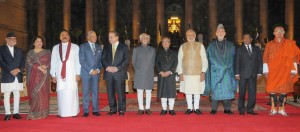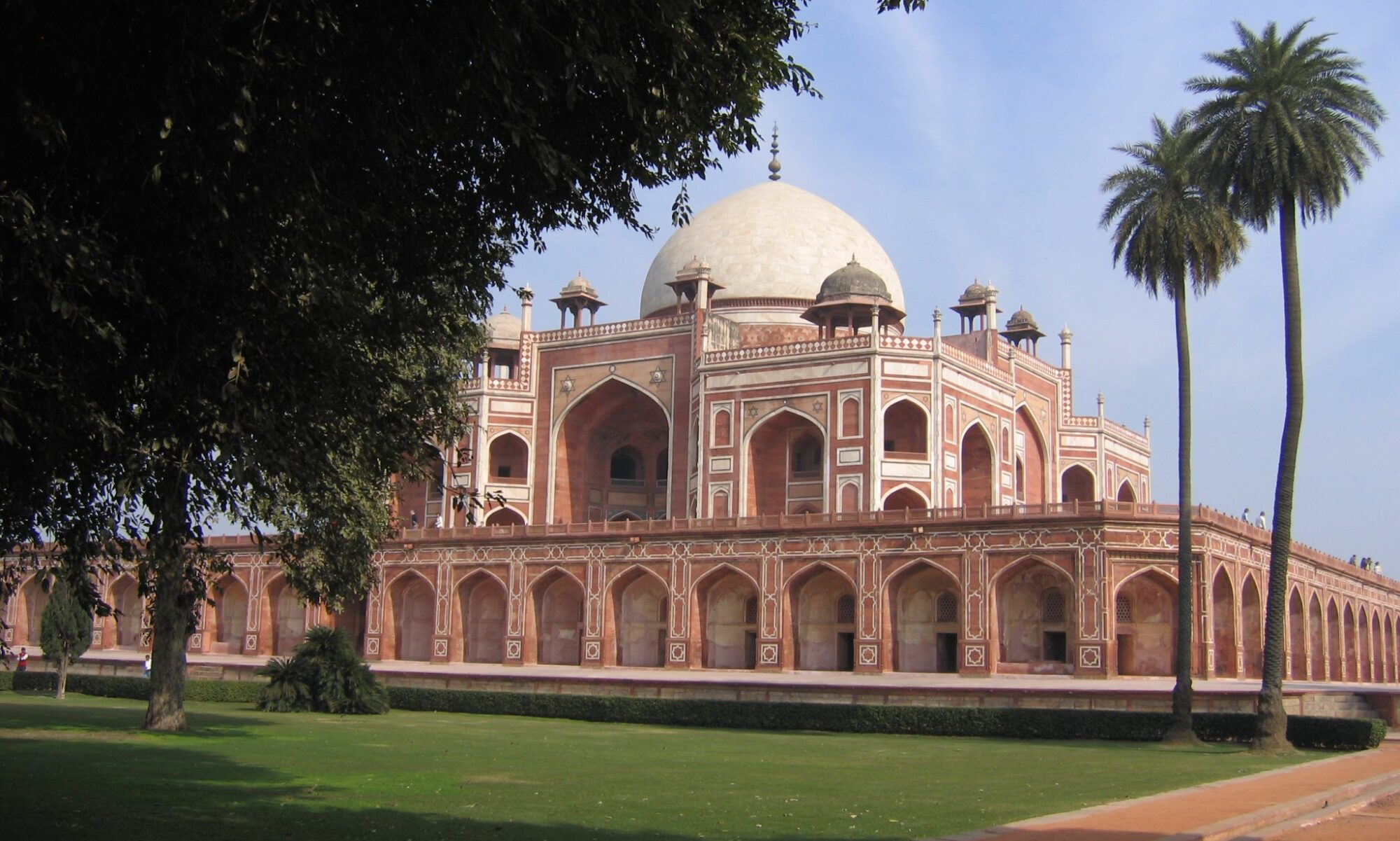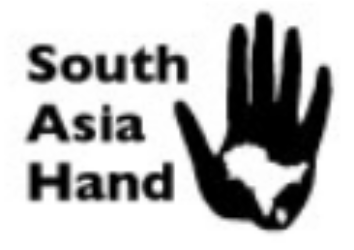
June 19, 2014: The first thirty days after Narendra Modi’s swearing-in as Indian prime minister set a breathtaking pace. The new government – and Modi personally –dominated the news and the action agenda. The strong centralization and detailed emphasis on economic revitalization were expected; the burst of high profile foreign policy initiatives was not. A month is a short time for drawing sweeping conclusions, but so far, Modi has been remarkably successful in creating excitement about his initiatives, and an air of inevitability about his determination to follow through. His challenge will be to maintain focus and discipline in his exuberant party, and to deal with soaring expectations.
Shaping the government: Modi’s party has a parliamentary majority even without any allied parties, so he had a freer hand than most in crafting his government. As promised, the cabinet is smaller than its predecessor – 45 ministers and ministers of state, down from 76 in the outgoing government. It is likely to expand, however, possibly even in the next few weeks. He did include a couple of ministers from parties that had allied with the BJP before the election – but the sulk of one member dissatisfied with his portfolio ended after a couple of days, with no change in portfolio. In keeping with his campaign promises, he reduced the number of cabinet committees, a move that was hailed as promising a quicker decision process.
The real message, however, was that the new government will be highly centralized, concentrating policy direction in the prime minister’s office. Modi installed two powerful civil servants there to ride herd on India’s sprawling interagency scene. Not since the height of Indira Gandhi’s powers has there been such a Prime Minister-centered government.
The strong prime ministerial direction, Modi made clear, was to be implemented by a newly energized bureaucracy, and was to follow the priorities set during the election campaign. Modi met on June 4 for over two hours with the most senior civil servants, the Secretaries from all over the Indian government, and telling them they would be “empowered” to act decisively and do what was right. His well publicized ten-point list of priorities for the first hundred days picked up many of the key points from the BJP’s election manifesto. It was all about economics, with a distinct tilt toward e-governance, efficiency, and infrastructure.
Early moves: The first formal statement of the new government’s policies came in the address to parliament of the President of India, Pranab Mukherjee, on June 9. Over 80 percent of the speech was about strengthening the economy. It picked up, with remarkable fidelity, themes and even diction from the party’s election manifesto – a striking rejoinder to a country often cynical about election promises. The calls for 100 new “smart cities” and for a “diamond quadrilateral” of high speed rail links among India’s biggest cities were pure Modi. The speech also picked up one traditional hallmark of the Hindu nationalist movement: increasing the focus on India’s cultural heritage. In a Modi-esque turn of phrase, this went by the name “e-bhasha”, or “e-language” and was a call to digitize India’s literary classics and make them available to everyone. A string of ministers, including those responsible for agriculture, food processing, and small and medium enterprises, have carried out well-publicized consultations outside the government, followed by press releases suggesting that action would soon follow.
The real test of the government’s ability to turn campaign themes into action, however, will come in early July, when it presents its first budget. Pre-budget consultations are already under way. In early June, Finance Minister Arun Jaitley, who has been close to Modi for years and is universally looked on as one of the real powers in this government, began a round of consultations with particular stakeholders from agriculture, banking, the social sectors, and many more. A couple of key personnel changes, including the sudden installation of a new Revenue Secretary to replace one who had only been in the job for a couple of months, were pushed through to give Jaitley a full team to work with. The press is full of expectations about the new budget, perhaps most prominently the inclusion of a Goods and Services Tax to harmonize taxation around the country. Jaitley is not talking.
The most important early moves may have been in personnel. The new government requested the resignations of state governors appointed during the previous government, especially those with close political ties to Congress. (The position is the titular head of a state government, analogous to the President of India, with little political responsibility except in times of crisis.) Interestingly, the government wants to replace them with some of the BJP elder statesmen who before the election had been unceremoniously denied the right to run for parliament from constituencies that they had represented for years if not decades. A governorship would provide a place of respect, but little real power – and would help keep peace inside the party. In addition, there has been a tussle over the assignment of personal assistants to the new cabinet officers, with Modi insisting on clearing all these assignments, and predictable unhappiness among his ministers. Modi himself appointed a new Private Secretary, selecting a civil servant who had served much of his career in Gujarat, but whose immediate previous post was in Manmohan Singh’s office. The one consistent message from all these moves is that Modi plans to exercise very detailed control.
Economic response: Financial flows announced since the election results became known have been sharply up. Foreign direct investment was up 8 percent compared to a year earlier; foreign institutional investment during the first quarter of 2014 reached $10 billion. It is widely believed, though hard to prove, that this reflected the anticipated Modi victory and the hoped-for arrival of a more decisive and business-friendly government. The government’s announcement that it planned to speed up the project approval process kept markets buoyant.
But the new government faces some serious challenges. Early assessments of the monsoon are discouraging – as much as 49 percent below average rainfall. Inflation had already been a problem, and a bad crop season makes food inflation a near-certainty. Events in Iraq may do the same for fuel inflation. Jaitley’s early comments on the budget are clearly preparing the Indian public for difficult news. He has referred to his legacy from the previous government as “a lot of unpaid bills.”
The surprise: foreign policy: Modi’s early foreign policy moves sent two principal messages. The first was to underscore his commitment to India’s primacy in the region – and his conviction that this can be implemented in ways that benefit both India and its neighbors. By inviting the leaders of all the South Asian countries to his swearing-in – a big, bold ceremony, quite different from what had been the traditional format – Modi seized the initiative. His cordial meeting with Pakistani prime minister Nawaz Sharif, together with an exchange of gifts of saris for the two prime ministers’ mothers, set a constructive tone for what many people thought would be India’s most difficult relationship. Both men rose to the occasion; the hard work of turning a good beginning into a better national relationship is just beginning.
Modi’s second foreign policy message was a strong push to revitalize relations with the world’s major powers. That too started at the inauguration. Sitting in the front row was the prime minister of the Central Tibetan Administration, resident in India, Dr. Lobsang Sangay. The Tibetan leaders in India normally are held to a very low profile by their Indian hosts, so this prominent placement – based, it was said, on an invitation from the BJP party – drew a protest from Beijing. This did not, however, prevent the Chinese government from sending its foreign minister to Delhi two weeks later, the first major visit to the new government at that level. Modi is evidently fascinated by the economic success of the major East Asian powers; accordingly, his first official trip out of the region will be to Japan (following a lightning visit to Bhutan).
The relationship between Modi and the United States had been much complicated by the U.S. revocation of Modi’s visa in 2005. Against this background, the early moves between the Modi government and the Obama administration were bold and, so far at least, astonishingly productive. President Obama telephoned Modi as soon as the election results were known, and invited him to Washington. Within the next few weeks, the senior U.S. official responsible for South Asia, Nisha Biswal, was in Delhi, discussing plans for a possible Modi visit in September. The U.S. government is clearly trying to listen carefully for both the substance and the style of how the new government wishes to work with it, and to use the installation of a new government as an opportunity for a new departure. Both defense and economic relations will play an important role.
Potential trouble spots: All told, this is a remarkable display of determination and discipline. The new government, however, faces both internal and external challenges. A couple of ministers have spoken up on their own, only to be yanked back, apparently at the prime minister’s direction. One such voice came from Jitendra Singh, a newly installed minister of state working in the prime minister’s office, who was quoted on his first day in office as saying that the new government was getting ready to abolish the constitutional provision giving special status to Jammu and Kashmir. The BJP has long opposed the provision, so it was not surprising that Kashmiri politicians pounced on the statement as evidence that the new government was going to run roughshod over them. By evening, Singh claimed to have been misquoted, and the prime minister had apparently distanced himself from the statement, with his charm offensive toward Pakistan still alive. But the ground rules for ministers to speak out on controversial issues may generate internal tensions, and in the past, large majorities have sometimes been plagued with discipline problems.
A second potential trouble spot is that while the new government controls the lower house of parliament, it has well under half the seats in the Rajya Sabha, or upper house. The first month saw a few moves toward personalities outside the BJP that might be important there or at the state level. The fiery Jayalalithaa, chief minister of Tamil Nadu from one of two Tamil parties, stayed away from Modi’s inauguration, but met with him once the government was in place. More recently, the chief minister of India’s largest state, Uttar Pradesh, approached Modi and expressed his support for Modi’s economic plans. It is too soon to say how much cooperation Modi will receive – and how hard he will work to retain it – after the honeymoon is over, but so far at least, he is not taking his strong political position for granted.
The outsized expectations Modi has generated have led to hopeful statements about the government from some astonishing sources. Former Congress minister Shashi Tharoor drew fire from his party colleagues for a Tweet that was interpreted as too complimentary to the newcomers. This is a huge asset for a government that will have to deal with financial constraints, rising food prices, and the inherently slow process of addressing structural economic problems. But it is also a danger: will the government be able to avoid crashing disappointment? That will be a test of both Modi’s economic management and his political skills.
Teresita and Howard Schaffer

